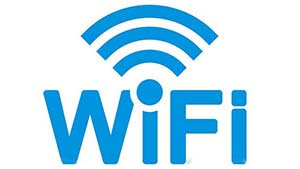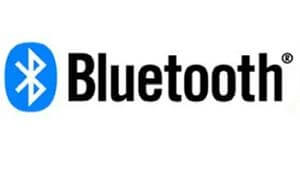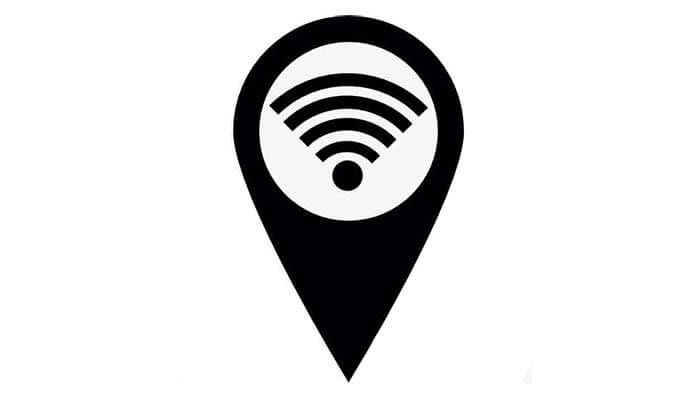This article talks about the 7 common positioning technologies comparison, GPS positioning, Beidou positioning, base station positioning, Bluetooth positioning, WI-FI positioning, UWB positioning, and RFID positioning comparison.
Positioning technologies 1. GPS positioning
GPS positioning is the most common, it has a good signal, high positioning accuracy, and the use of a wide range of equipment, almost all the need to locate the priority will be used GPS positioning.
The disadvantage is that the signal cannot pass through the metal and reinforced concrete mixture, so it cannot be used indoors such as in underground parking lots, under high bridges, and under dense high buildings.
And GPS in the initial launch of positioning, slow star search speed, it takes about 2 to 3 minutes, but now this defect has been well solved, many GPS positioning equipment has A-GPS or EPO auxiliary positioning function, to help in the search for the star fast positioning position, generally, only a few seconds to get it done, some even complete the second fixed positioning.
Positioning technologies 2. Beidou positioning
Beidou positioning, as we all know, is China’s full development of satellite positioning methods that can compete with GPS positioning, positioning principle and GPS is the same, based on the satellite in the sky to confirm the current location.
Although the principle is the same, there is still a gap in the positioning accuracy, the scale of application, is still primarily used in the military, civilian scale is still vigorously promoted, and civilian scale positioning accuracy of a few meters to dozens of meters are available, the positioning chip price of the Doji module compared to the GPS module is high, in some remote villages, remote places may not have a signal.
At present, the GPS satellite positioning system covers the global scale, to ensure that any address on Earth, at any time can simultaneously observe 6-9 satellites (in fact, up to 11), while the Doji now only to Southeast Asia to complete full coverage, plans in 2020 or so, the completion of global coverage of the Doji satellite navigation system.
Positioning technologies 3. Base station positioning
Base station positioning, base station positioning is also a very common positioning method, it is based on the three major communication operators to establish the base station to position, then its advantages and disadvantages are very obvious, the neighboring base station points, then the positioning is accurate if the site is less or even no, then the positioning error is large, or perhaps unable to locate.
Generally speaking, regardless of the number of base stations, the positioning error of the base station in the tens of meters or so, the error is a few hundred meters.
Positioning technologies 4. WiFi positioning

WiFi positioning, WiFi positioning is actually a kind of indoor positioning method, but with the large-scale coverage of WiFi in the outdoors, it is also gradually being well used in outdoor positioning technology.
In general, the location of the wifi hotpot (that is, AP, or wireless router) is fixed, and the hotpot only needs to be powered on, no matter how it is encrypted, it will definitely transmit signals to the surrounding area, as long as the device can sweep to the wifi, without connecting to the wifi, the positioning end can send the information of the detected hot to Skyhook (the company that developed WiFi positioning technology)’s Server, the server according to this information, query, computing, you can know the specific location of the client.
The accuracy of WiFi positioning is also very high, but the defect is that the client must have Internet access, and there must be a WiFi hotpot in the vicinity to do so.
Positioning technologies 5. Bluetooth positioning

Bluetooth positioning, the use of Bluetooth positioning constraints is more. The primary use is The Bluetooth 4.0 beacon broadcast function, the general application is in the indoor, fixed-point arrangement beacon base station.
- These Bluetooth beacon base stations constantly send beacon broadcast messages (message contains transmit power).
- The terminal device equipped with Bluetooth 4.0 module receives the beacon broadcast message, measures the received power, and brings it into the function of power attenuation and interval connection to calculate the interval of the beacon base station.
Positioning technologies 6.UWB positioning technology

UWB positioning technology refers to a specific type of positioning, while high precision positioning is a collective term for a number of positioning technologies, and UWB positioning is a type of high precision positioning.
UWB technology uses nanosecond non-sinusoidal narrow pulses to transmit data, so it occupies a wide spectrum and has a high temporal resolution.
Therefore, the device positioning tag is attached to the surface of the positioning object, and when the tag enters the signal coverage of the base station, it automatically establishes contact with the base station and sends electromagnetic wave signals to determine the tag location.
Each tag has a unique ID number, through which the positioned object can be linked so that the positioning base station can find the actual positioned location through the tag.
UWB base stations are distributed at the geometric edges of the positioning area and provide signal coverage of the area.
A positioning system generally consists of more than three positioning base stations, which can receive UWB signals sent by positioning terminals (i.e. positioning tags), analyze the interrelationship, calculate the signal propagation delay, and calculate the distance between the tag to be positioned and the base station through a specific algorithm, and then transmit it to the positioning engine through a wired network or WLAN.
UWB indoor positioning technology has matured and is used in a wide range of positioning accuracy up to 10cm while having the advantages of high dynamics, high capacity, and low power consumption.
Positioning technologies 7.RFID positioning technology
Radio frequency identification (RFID) technology is a kind of control easy, suitable for automatic control field skills, it uses the transmission characteristics of inductance and electromagnetic coupling or radar reflection, to complete the automatic identification of the identified object.
Radiofrequency (RF) is an electromagnetic wave with a certain wavelength, its frequency is depicted as kHz, MHz, GHz, and the scale varies from low frequency to microwave.
The structure of the RFID indoor positioning system:
Generally by the electronic tag, radio frequency read-write, middleware, and computer database composition. RF tag and read-write are through the antenna erected by the space electromagnetic wave transmission channel for data exchange.
In the positioning system application, the radio frequency read-write is placed in the mobile object to be measured, and the radio frequency electron label is embedded in the operating environment.
The electron label stores the information which has the orientation recognition, the read-write then connects to the information database through the wired or wireless way.
Besides this Comparison of 7 Common Positioning Technologies article, you may also be interested in the below articles.
What Is The Core 5G NR Technology?




